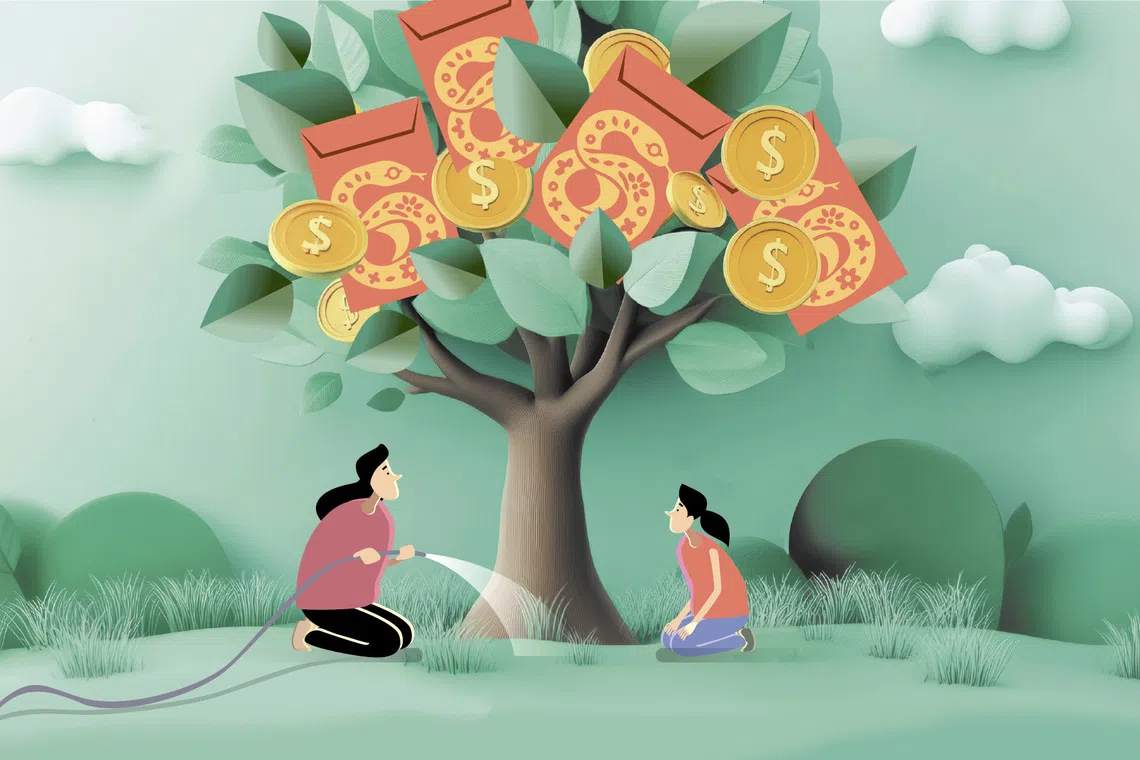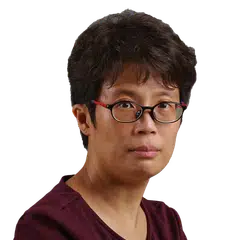This Chinese New Year, I am going to do something about my daughter’s red packets
Sign up now: Get ST's newsletters delivered to your inbox

Parents are exploring ways to make their children's hongbao money work harder for them.
ST ILLUSTRATION: CEL GULAPA
Follow topic:
SINGAPORE – I remember, as a kid, looking forward to Chinese New Year because I got new clothes and, best of all, extra money to spend on amusement rides at River Hongbao.
Looking back now, it dawned on the older me that the money from those red packets could have been spent more wisely.
I was reminded of it again this week when my daughter received red packets from her grandparents, aunties and uncles.
All her hongbao money from the time she was born is still sitting in a drawer at home, untouched.
This Year of the Snake, we decided to open each packet and deposit the money in her savings account.
But that is only the beginning, as I fully intend to make her money work harder for her.
I have been asking around and have decided on two things.
Firstly, I will top up her Central Provident Fund (CPF) account under the Voluntary Cash Contribution Scheme.
This is the only way that I can make some cash top-ups to her Ordinary Account (OA), subject to top-ups to her Special Account (SA) and MediSave Account (MA) as well.
The allocation rates for those under 35 are as follows: for every $100, $62.17 will go to the OA, $16.21 to the SA and $21.62 to the MA.
Ms Lorna Tan, head of financial planning literacy at DBS Bank, says: “Assuming a monthly contribution of $200, your child can expect to have around $41,000 in her OA, $14,000 in her SA and $19,000 in her MA when she turns 21.”
I prefer to top up her OA because it can be used for housing, giving her some spare cash when she needs to buy her first home.
I am less inclined to top up her SA, as I want her to work and grow her own retirement savings.
Mr Ray Zheng, client adviser at financial consultant Providend, says that if a parent tops up their child’s SA, he or she would reach their Full Retirement Sum early.
Mr Zheng has two children – a son in Primary Three in 2025 and a daughter who will be starting Primary One in 2026.
“I would not top up their CPF accounts. I will actually teach them how to use it for themselves when they are closer to the working age,” he says.
I also asked him about regular shares savings plans, as this is the second option I am considering for my daughter’s hongbao money.
Mr Zheng has already set up separate joint accounts for his children and will deposit $1,000 in each account.
Children cannot have their own investment accounts until they are at least 18 years old, so parents have to set up a joint account with them.
Mr Zheng says he will use this joint account to start a conversation with his son about investments.
“Next year, I can tell my son that in 2025, we actually started you off with $1,000. Today, it has already grown to $2,000,” he says.
He adds: “My intention is to show my son that his money is moving somewhere, and it is growing. This is the way daddy and mummy save for you.
“It speaks a lot more than just explaining concepts.”
I agree with Mr Zheng that these are real-life opportunities to engage our children in financial planning and investments.


